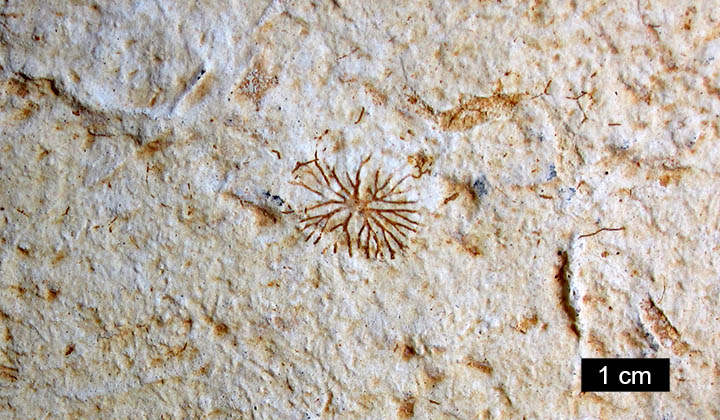Glockeria Ksiazkiewicz, 1968
DESCRIPTION: Starlike trace with numerous long rays, straight, pointed, commonly dichotomous and radiating from small central area.
BEHAVIOR(S): Fodinichnia (feeding trace).
ENVIRONMENTAL SETTINGS: Fully marine. Found in turbidite (flysch) deposits or deep marine environments.
POSSIBLE TRACEMAKERS: Burrowing marine organisms, such as worms or vermiform animal.
GEOLOGIC RANGE: Ordovician-recent
ADDITIONAL REFERENCES:
REMARKS: Pickerill (1982) introduced Glockerichnus as a replacement name for Glockeria because Pickerill was informed that the genus name was already in use as a phacopid trilobite genus designated by Wedekind (1912); however, Glockeria Wedekind was determined invalid and placed under Phacopidella Reed (1905) by McLearn (1918). Since the trilobite genus Glockeria Wedekind was synonymized with Phacopidella, the use of Glockeria Ksiazkiewicz as an ichnogenus is valid and has priority over Glockerichnus. Glockeria is also a plant genus designated by Nees (1847), later placed under Hansteinia Oersted (1854). Under the ICZN (International Code of Zoological Nomenclature) and ICN (International Code of Nomenclature for algae, fungi, and plants), names of animal and plant genera do not compete in priority, but designating and using animal and plant taxa with identical names is highly discouraged.
